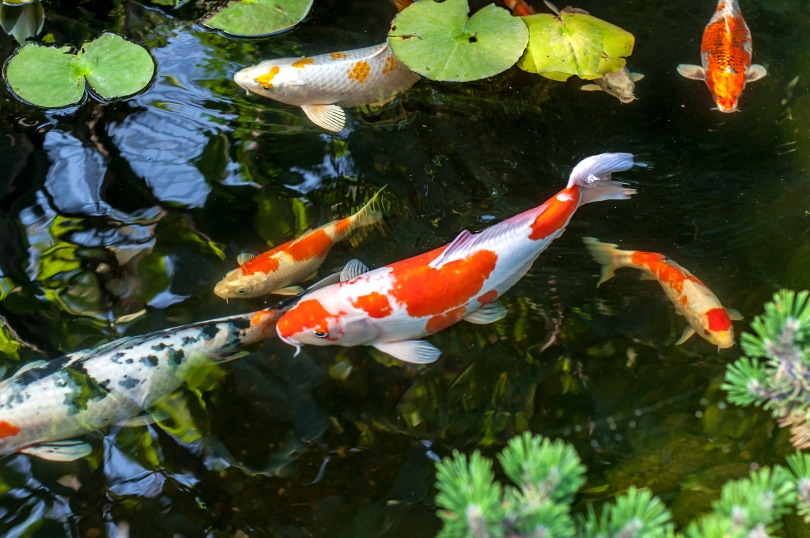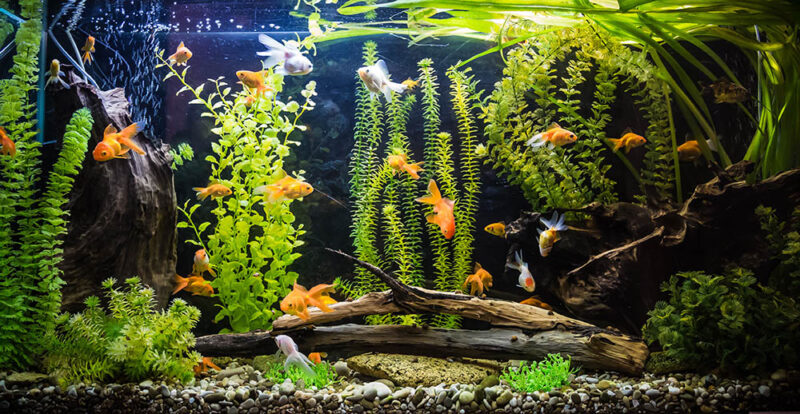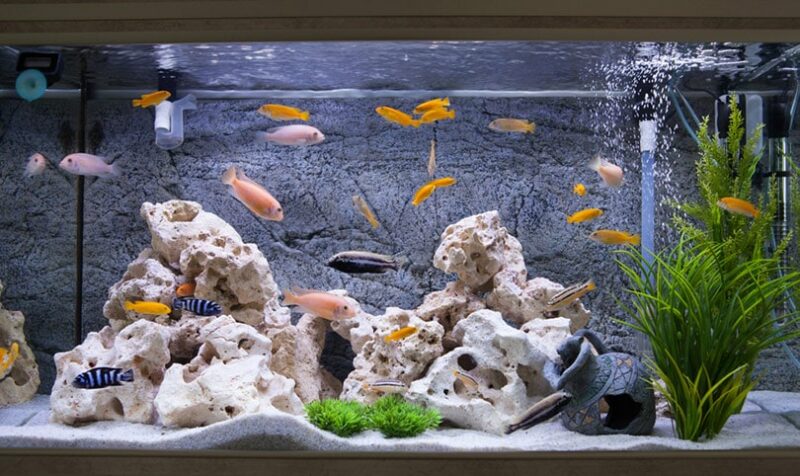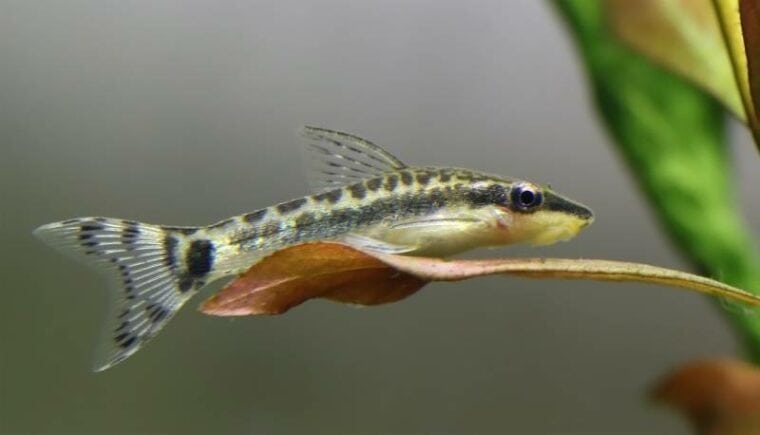
Click to Skip Ahead
Otocinclus refers to a genus of freshwater catfish that go by many names, including the Dwarf Suckerfish, Oto Catfish, or simply Oto. They are small and active fish that make great additions to both nano and large aquariums. These peaceful herbivores primarily feed off algae, making them perfect for aquariums with stubborn algae growth.
Breed Overview
| Size: | Up to 2 inches long |
| Lifespan: | 3–5 years |
| Similar Breeds: | Chinese Algae Eater, Cory Catfish, and Pictus Catfish |
| Suitable for: | Intermediate to advanced fish keepers |
| Temperament: | Peaceful, social, skittish, active |
There are around 17 different species of Otocinclus catfish, but not all of them are kept as pets. The most common species kept in aquariums are the O. macrospilus, O. vittatus, O. vestitus, and O. cocama. These species are often mistaken for one another because they all have strikingly similar appearances. This is why Otocinclus catfish are often mislabeled when they are up for sale, and there is a lot of confusion with their common names.
Caring for Otocinclus is relatively easy once you understand their basic care requirements, although they are still recommended for more experienced fish keepers.
Otocinclus Catfish Characteristics
How Much Do Otocinclus Catfish Cost?
Otocinclus catfish originate from South America, specifically in Brazil, Venezuela, Bolivia, and Argentina. Their wild habitat consists of slow-moving and shallow streams or rivers cluttered with rocks and vegetation. Although there are many species of Otocinclus catfish, not all of them are kept as pets. Their rarity and availability in the aquarium trade industry can affect their price slightly, although they are not very expensive fish.
The O. cocama or Zebra Otocinclus is considered rarer than the other three species and generally costs between $30 and $80. The more common species of captive-raised Otocinclus catfish cost around $10 to $35 per fish. You can often find them sold at a discounted price if you purchase them in groups from pet stores or online retailers.
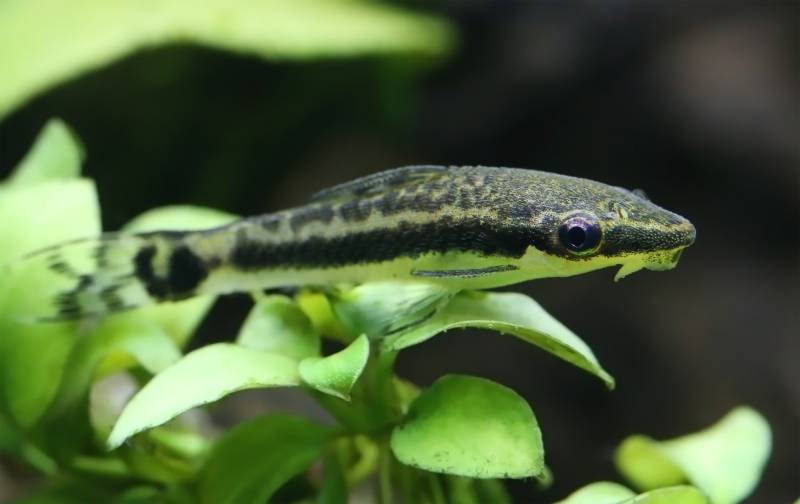
Sociability of the Otocinclus Catfish
Do These Fish Make Good Pets?
Caring for Otocinclus catfish has its own set of challenges, but they make good pets. It is a good idea to only keep Otocinclus if you have previous experience raising and caring for sensitive tropical fish. They are often described as being finicky in aquariums and do not tolerate stress well.
Otocinclus are very sensitive to water quality, which affects their behavior and general health. They need to be kept in well-maintained and mature aquariums that meet their ideal water parameters. This makes them a poor choice for beginner fish keepers who are still learning the basics of aquarium maintenance. Otocinclus need to be kept in tropical freshwater aquariums with no traces of ammonia or nitrite and is slightly acidic. Their small size makes them suitable for nano aquariums under 30 gallons, although they benefit from having more room to explore.
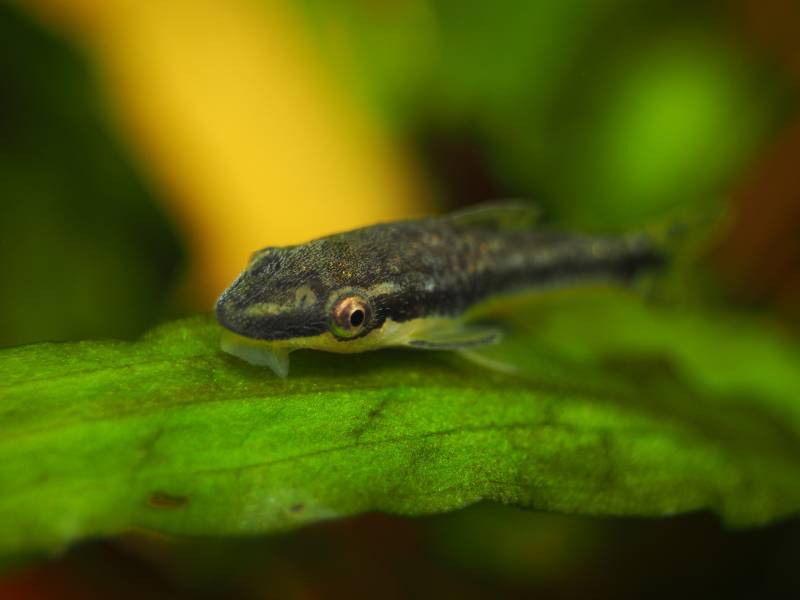
Does This Fish Make a Good Tankmate?
The Otocinclus is a highly peaceful and social fish, which makes them compatible with other small fish with a similar temperament and water parameters. Before keeping Otocinclus catfish with other tankmates, it is important to understand their social requirements. Otocinclus catfish are social fish that form large shoals in the wild.
They should never be kept alone or in pairs, and ideally in groups of five or more of the same species. While the different species can coexist together, they may have slight differences in their social behaviors that could interfere with the compatibility of the shoal.
Aside from their species, Otocinclus catfish are compatible with other small and peaceful fish that thrive at tropical temperatures. They can easily be injured or stressed out by being kept with incompatible tankmates, so choose their tankmates carefully.
| Compatible Tankmates: | Incompatible Tankmates: |
| Neon Tetra | Goldfish |
| Black Skirt Tetra | Koi |
| Harlequin Rasbora | Oscars |
| Glowlight Tetra | African Cichlids |
| Livebearers (Guppies, Mollies, Platies, and Swordtails) | |
| Bronze Corydoras | Jack Dempsey |
Other than fish, Otocinclus catfish can be housed with mystery snails and sometimes even shrimp if there are plenty of hiding places.
Care Guide & Tank Set Up
Otocinclus catfish do not have very demanding housing requirements. A 15-gallon tank can comfortably house five to six Otocinclus catfish thanks to their small size. The tank size will need to be upgraded if you plan to keep them with other fish. Despite their small size, Otocinclus catfish should not live in small bowls or vases as they do not provide them with enough space to thrive.
Furthermore, the tank should have more horizontal swimming space to accommodate their bottom-dwelling behaviors.
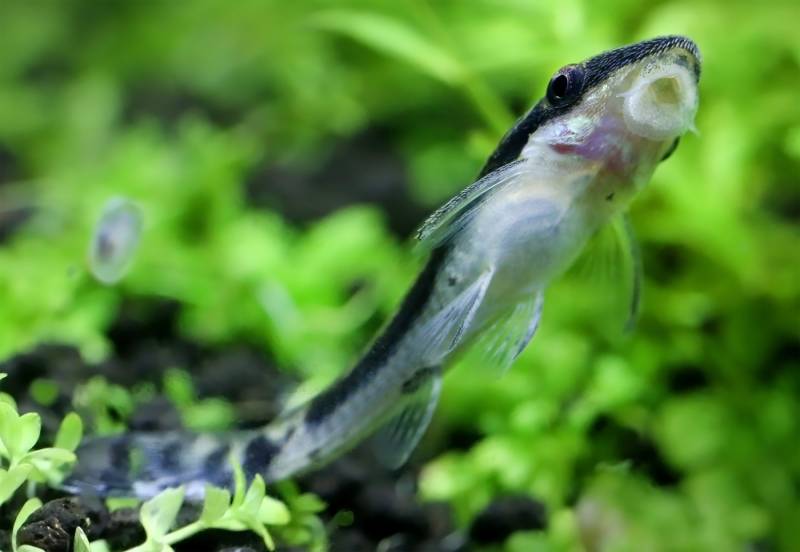
Water Quality, pH, & Temperature
If you want your Otocinclus catfish to be happy and healthy in an aquarium, good water quality is vital. Otocinclus catfish are tropical fish that need a heater in their aquarium set to a temperature range of 74 to 82 degrees Fahrenheit (23° to 27° Celsius). The temperature needs to be kept stable with few fluctuations to minimize your Otocinclus catfish’s stress.
Your Otocinclus catfish’s water should have an acidic to neutral pH range of 5.5 to 7.5, and a water hardness of 7 to 15 dGH. Their tank needs to be fully cycled before any Otocinclus catfish are added. There should be no traces of ammonia and nitrite in their water, and nitrates are tolerable up to 15 ppm.
Substrate
As bottom-dwelling fish, Otocinclus catfish will spend most of their time swimming along the substrate. It is important to choose a natural and smooth substrate that will not injure them or be difficult for them to forage through. A sandy or very fine quartz gravel substrate is recommended. The color should range from light tan, brown, or even black. You want to avoid any sharp gravels or ones with harmful dyes or water-altering properties. Some substrates ideal for live plant growth can change the pH of the water, which might be stressful for Otocinclus.
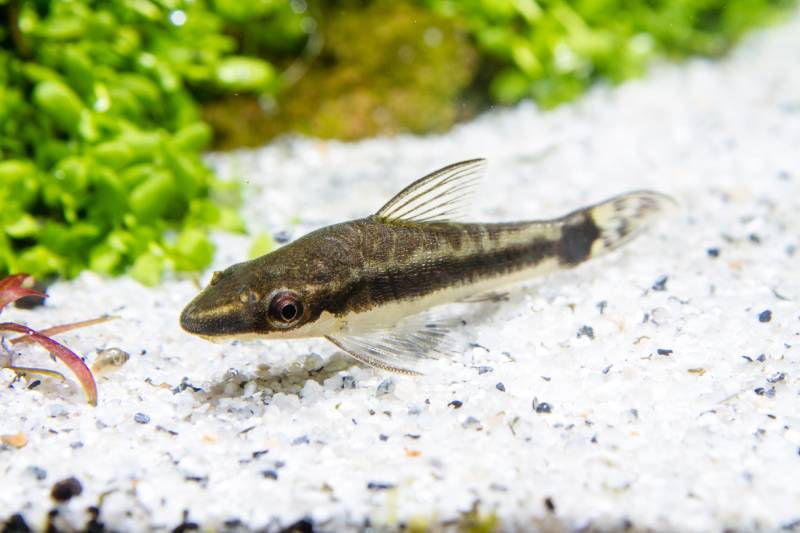
Plants
Otocinclus catfish thrive in heavily planted tank setups. They enjoy having various plants to hide under and it replicates their wild habitat. Live plants like java moss, jungle vals, java fern, fox tail, and hornwort are recommended. You can also add pieces of driftwood or rocks to the tank to encourage your Otocinclus to eat any biofilm or algae that grows on them.
Lighting
Otocinclus catfish are primarily nocturnal fish, but they still need lighting during the day. Most Otocinclus catfish are active in the evenings and when the aquarium lights are turned off, they will eat and forage during the day too. You want to avoid keeping them in brightly lit aquariums as this can be stressful for them and cause them to seek out darker areas of the tank to hide. A low to moderately bright aquarium light should be kept on for 6 to 10 hours per day and turned off at night.
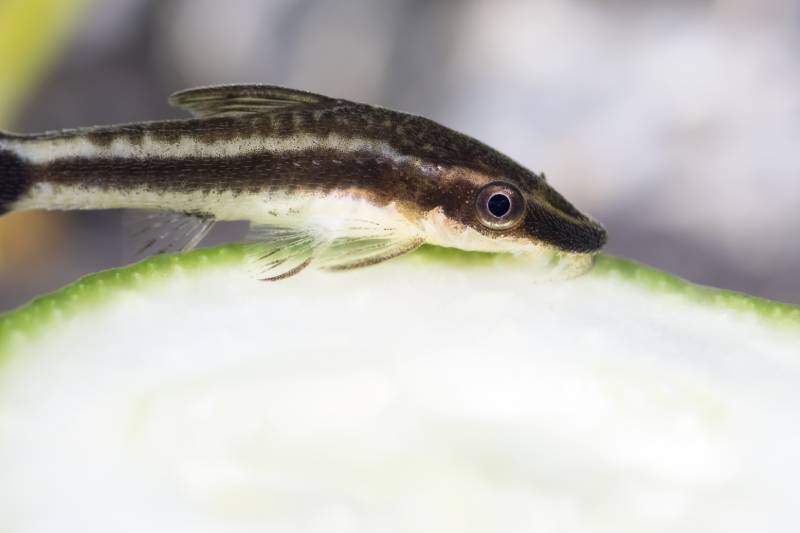
Filtration
Otocinclus catfish need a filtration system in the aquarium to keep the water clean and moving. However, the filter should not produce a strong current, since Otocinclus catfish originate from slow-moving waters. Most filters can be used in Otocinclus aquariums, including sponge, hang-on-back (HOB), canister, and various internal or external filters. The filter should ideally use both mechanical and biological methods to filter the water, but chemical filtration is beneficial too.
Things to Know When Owning an Otocinclus Catfish:
Food & Diet Requirements
The Otocinclus catfish is an herbivore that mainly feeds on algae and detritus in the wild. However, they eat a more omnivorous diet in captivity. Otocinclus catfish do not require much protein in their diet, but you can occasionally offer live foods like baby brine shrimp and daphnia. Their staple commercial diet should consist of a sinking pelleted or flake food with algae as the main ingredient. Veggies like zucchini and cucumber can be offered to Otocinclus a few times a week, but they should be removed within 30 minutes to prevent the water from fouling.
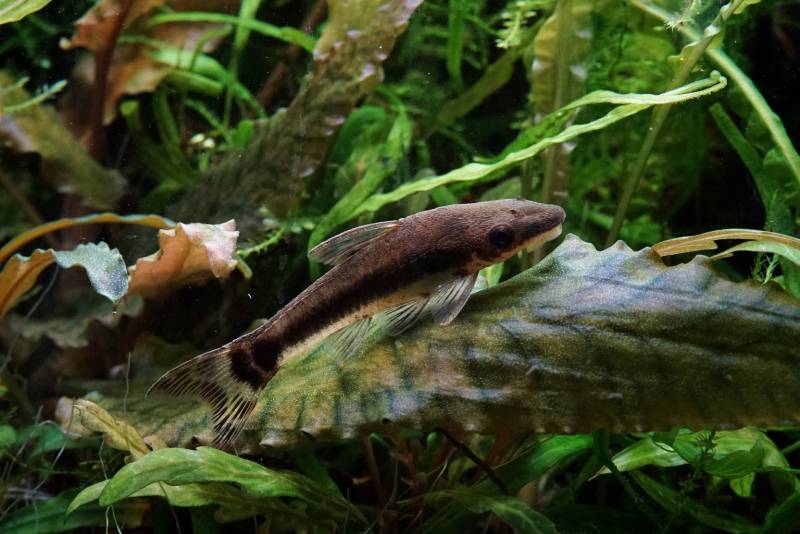
Size & Growth Rate
Most Otocinclus catfish are relatively small in size, growing no larger than 2 inches in length. However, the size of Otocinclus catfish can vary depending on their species as some grow significantly larger than others. The smallest species in the Otocinclus genus is the O. tapirape 1 inch long. Whereas the largest species, the O. flexilis, is still small at only 2.7 inches long.
They have a relatively fast growth rate and do most of their growth within the first 4 months of their life. Most Otocinclus catfish are fully grown and sexually mature by the time they are 6 months old.
Varieties
There are numerous species of Otocinclus catfish, with only a handful available as pets—the Zebra, Common, Dwarf, and Silver Otocinclus. They are better identified by their species name since certain Otocinclus catfish do not have common names. Some species that were previously in the Otocinclus genus have since been changed, leading to even more confusion amongst hobbyists. The Golden Otocinclus catfish specifically was formerly known as the O. affinus but has since been placed in the Macrotocinclus genus.
Despite all the confusion about the species and their appearances, the few Otocinclus catfish kept as pets have a similar appearance. They are all characterized by their tiny pencil-shaped bodies with brown to grey colorations and dark stripes. One of their most distinguishing features is the small suckermouths that they use to suction against surfaces.
The Zebra Otocinclus catfish is easily identified by their unusual patterns of silver and dark brown blotches, whereas the Silver Otocinclus catfish has a shiny grey and brown coloration with dark side stripes. The Common or Dwarf Otocinclus have a yellowish-brown coloration, with the O. vittatus having uneven brown markings above their dark side stripes. They all have a forked caudal fin, a single anal fin, a triangular dorsal fin, and a pair of ventral and pectoral fins.
Lifespan and Health Conditions
Otocinclus catfish have a relatively short lifespan of around 3 to 5 years. This is significantly shorter than many other bottom-dwelling fish like the Plecostomus and similar to the Cory catfish. With proper living conditions and a balanced diet, you can keep your Otocinclus catfish healthy enough to live for the next 5 years in your care.
Regardless of how well you care for your Otocinclus catfish, they can still develop certain health conditions that can affect their lifespan.
Male vs Female
Otocinclus catfish are sexually dimorphic fish and there are slightly visible differences between the sexes. The female Otocinclus catfish is slightly larger and plumper than the males, which is easy to spot when viewed from above. Male Otocinclus catfish have a slimmer appearance and slightly pointier fins.
3 Little-Known Facts About Otocinclus Catfish
1. The Otocinclus catfish is one of the smallest genera of catfish.
2. There are many different species of Otocinclus catfish, but only a few of them are kept in aquariums.
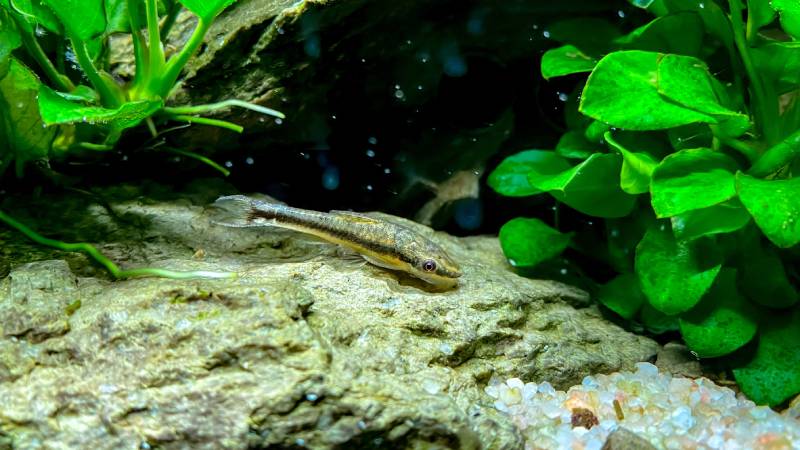
3. Otocinclus catfish are some of the best algae-eating fish that can be used to keep algae growth under control.
Final Thoughts
If you are an experienced fish keeper looking to add a group of small algae-eating fish to your aquarium, the Otocinclus catfish might be a good choice. They are compatible with other small and peaceful fish, making them suitable additions to tropical community aquariums. Otocinclus catfish rarely grow past 2 inches long, making them suitable for nano aquariums over 10 gallons in size.
Keep in mind that as a social species, the Otocinclus catfish needs to be kept in groups of five or more. Their tank needs to be fully cycled and well-maintained to ensure that their water quality is ideal.
Otherwise, Otocinclus catfish are active shoaling fish that do a great job at eating stubborn algae and biofilm in aquariums.
See also:
Featured Image Credit: nwarul Kabir Photo, Shutterstock



